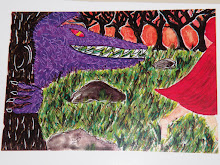Rapunzel’s encapsulation, her imprisonment in the tower by the sorceress, is depicted in the movie “Lars and the Real Girl.” Lars is a young man who lives alone in a garage next to his brother and his brother’s wife’s home. He does not like to socialize with others and avoids contact with others as much as possible. Contact is painful. During the movie we find out that Lars’ mother died while giving birth to him and that he grew up with a grieving father who never touched him. He has an older brother but his brother moved out of the house as quickly as possible, leaving Lars behind in a sterile environment with little warmth or touch.
Lar’s is living an encapsulated life, he is encased within himself. At some point in the movie, Lars gets the idea of ordering a life-size doll from a mail order internet site. This creative impulse is where something new emerges (could this be the prince in the fairy tale? Or perhaps Rapunzel’s song?) which begins to pierce through the encapsulation. Lars is ready to let something in, a woman, albeit a “plastic,” immovable woman. Although she is “plastic,” and precisely because she is “plastic,” she bridges two worlds, the world of Lars’ imagination, and the concrete world outside. This is important in Lars’ healing, to let the imagination have its say and this is an especially poignant aspect of the movie: his immediate family and the whole town although at first reluctant to give his “delusion” any room, make room for the new woman in Lar’s life, Bianca, and through a shared imaginal experience with his family and townspeople, Lar’s slowly emerges from his encapsulated experience and becomes a more integrated part of the community.
The depiction of the healing aspect of the imagination is an especially notable part of this film. At first, when the doll makes an appearance at Lar’s brother’s home, Lar’s brother is worried and takes him to see a doctor/psychologist in town. Initially his brother only wants to “fix” Lars, have the doctor take away the delusion, but the doctor recommends to the young couple that they go along with Lars. She calls his belief in Bianca a delusion but also states that the delusion may be a communication. When Lar’s brother protests and says that she is not real and that he doesn’t want to go along with the delusion, the doctor replies, “she is real and she’s sitting in the waiting room.” The doctor’s attitude is “the analytic attitude,” it respects the “reality” of the imagination, and the natural healing abilities of the individual as it emerges through the imagination. Bianca is real in Lars' imaginative world and the doctor is sensing a purpose to Bianca’s arrival. Her prescription is to allow the psyche to heal itself through what is emerging.
Subscribe to:
Post Comments (Atom)

No comments:
Post a Comment